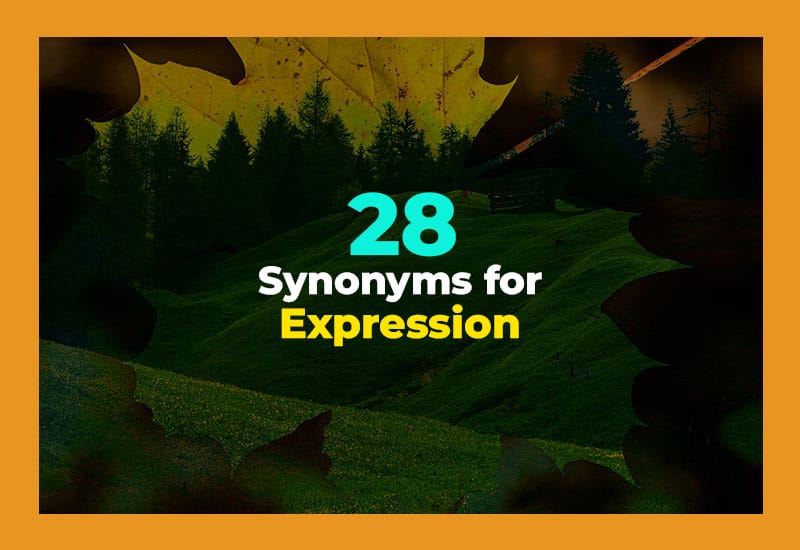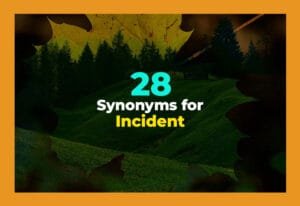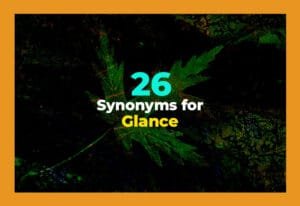You use expression every day to share how you feel or what you think. Whether through words, gestures, or art, expression helps others understand your ideas. In this article, you will learn 28 of the best synonyms for expression that can enrich your communication. Each word shows a unique way to express yourself, with easy examples you can try right away.
1. Articulation
Articulation is how clearly you say or explain something. It refers to the way you speak or present your thoughts so others can understand them easily. Good articulation means your ideas come out smoothly and clearly. For example, "Her articulation of the problem made it simple for everyone to see the solution." It's often used when talking about speaking, but can also mean how clearly ideas or emotions are shown. When you improve articulation, you help others grasp your message without confusion.
2. Statement
A statement is a clear and definite expression of something. It can be spoken or written, often used to give information or an opinion. For example, "The president's statement on climate change was very powerful." Statements are used to express facts, beliefs, or feelings openly. When you make a statement, you are sharing your thoughts directly. It's a way to communicate in a straightforward and confident manner, making your message easy to understand.
3. Declaration
A declaration is a strong and official way of expressing something. It often shows an important opinion or decision. For example, "The declaration of independence marked a new beginning for the country." Declarations are often formal and public, making them clear and serious expressions. When you declare something, you are making your feelings or decisions known loudly and clearly, leaving no doubt about your position.
4. Manifestation
Manifestation means the clear appearance or display of something, often a feeling or idea. It shows that an emotion or thought is real and visible. For example, "Her kindness was a manifestation of her good heart." When something is a manifestation, it is proof or evidence of what you feel or believe. It helps others see your inner thoughts or emotions through your actions or words.
5. Representation
Representation is when something stands for or shows something else. It can be an image, symbol, or action that expresses an idea or feeling. For example, "The dove is a representation of peace." In art or communication, representation helps to express complex ideas in simple ways. When you use representation, you give others a clear picture of what you want to say without directly stating it.
6. Conveyance
Conveyance means the act of communicating or making an idea known to others. It is about passing on your thoughts, feelings, or messages clearly. For example, "Her smile was a conveyance of happiness." It focuses on the way a message or emotion moves from one person to another. Good conveyance means that your ideas are understood exactly as you want them to be.
7. Communication
Communication is the general act of sharing information, feelings, or ideas between people. It can happen through talking, writing, gestures, or even art. For example, "Effective communication is important in every relationship." It is a broad term that covers many ways of expressing yourself. When you improve communication, you improve your ability to connect with others clearly and kindly.
8. Phrase
A phrase is a small group of words that express an idea or feeling. It is not a full sentence but can give a clear meaning. For example, "The phrase 'break a leg' is used to wish good luck." Phrases help make language more interesting and colorful. Using the right phrase can express your thoughts quickly and in a way that others will understand easily.
9. Voice
Voice means the sound you make when you speak or sing, but it also refers to your personal way of expressing yourself. For example, "Her voice was calm and full of confidence." Your voice shows your feelings through tone, pitch, and volume. In writing, your voice is your unique style that makes your work special. Using your voice well helps others understand not just what you say, but how you feel.
10. Utterance
An utterance is any spoken word, sound, or phrase. It can be short or long and shows a form of expression through speech. For example, "His utterance of surprise showed he didn't expect the news." Every time you speak, you create an utterance. It captures the act of saying something and is important in showing emotions or ideas in conversation.
11. Sentiment
Sentiment means a feeling or opinion about something. It shows your emotions or thoughts in a gentle or thoughtful way. For example, "The sentiment behind her words was one of deep care." Sentiments are often expressed in writing, speeches, or everyday talks to show how much you feel about a topic. Sharing your sentiment helps others understand your true emotions.
12. Feeling
Feeling is the experience of emotion or sensation inside you. It can be happiness, sadness, anger, or any other emotion. For example, "He had a feeling of joy after hearing the good news." Feelings are often expressed through words, actions, or facial expressions. Talking about your feelings helps connect with others and share your inner world.
13. Emotion
Emotion is a strong feeling that affects your thoughts and actions. It can be love, fear, excitement, or anger. For example, "Her emotion was clear when she smiled after winning." Emotions play a big role in how you express yourself. They add depth and meaning to your words and actions. Understanding emotions helps you communicate more honestly and deeply.
14. Impression
An impression is the effect or feeling someone gets from something or someone. It is how a person or event appears to you. For example, "The artist made a strong impression with his colorful paintings." Impressions can be based on what you see, hear, or feel. They shape how you think about others and help you express your reactions clearly.
15. Indication
Indication means a sign or hint that shows something is true or will happen. It is a small clue or message expressed in actions or words. For example, "Her smile was an indication that she was pleased." Indications help express feelings or facts without saying them directly. They guide others to understand what you mean through subtle signals.
16. Sign
A sign is a symbol, action, or gesture that gives information or shows meaning. For example, "A red light is a sign to stop." Signs are used everywhere to communicate quickly and clearly. When you use signs, you help others understand important messages without words. Signs are a simple but powerful way to express ideas and warnings.
17. Gesture
A gesture is a movement of the body, especially the hands or head, to express an idea or feeling. For example, "She gave a thumbs-up gesture to show approval." Gestures help add meaning to your words or replace them altogether. They are natural ways to communicate emotions and reactions in face-to-face conversations.
18. Signal
A signal is a movement, sound, or action that gives information or tells someone to do something. For example, "The whistle was a signal for the players to stop." Signals are used to communicate quickly and clearly, especially in groups. They can be simple but important ways to express instructions or feelings without using words.
19. Showing
Showing means making something visible or clear to others. It is the act of expressing or displaying feelings, thoughts, or facts. For example, "Her tears were a showing of her sadness." Showing can happen through facial expressions, actions, or words. It helps others understand what you feel or think by making it easy to see or hear.
20. Display
Display means to arrange or show something so that others can see it clearly. For example, "The museum's display of paintings attracted many visitors." It is often used when talking about showing emotions or objects. When you display your feelings, you make them clear and obvious to others, helping them understand your inner world.
21. Exposition
Exposition is a detailed explanation or presentation of an idea or story. For example, "The exposition of the plan helped everyone understand the project." It is used in writing, speeches, or teaching to express ideas clearly and fully. Good exposition helps people learn and grasp new concepts by giving clear and full information.
22. Description
Description is the act of telling or showing what something or someone is like. For example, "Her description of the place made it easy to imagine." Descriptions help express ideas by giving details about appearance, feelings, or actions. They make your message richer and more vivid so others can understand it better.
23. Explanation
Explanation means making something clear by giving reasons or details. For example, "He gave an explanation for his late arrival." It helps others understand why or how something happens. Providing a good explanation is a useful way to express ideas, solve problems, and avoid confusion.
24. Presentation
Presentation is the act of showing or telling something to others in an organized way. For example, "The presentation of the results was clear and interesting." It can be done in meetings, classes, or speeches. A good presentation expresses ideas well and helps others learn and understand important information.
25. Formulation
Formulation is the careful creation or expression of ideas, plans, or feelings. For example, "The formulation of a new strategy took many meetings." It means putting thoughts together in a clear and organized way. When you formulate your ideas well, you express them so others can follow and support them.
26. Rendering
Rendering means showing or expressing something in a particular way. For example, "The artist's rendering of the scene was beautiful." It is often used in art or writing to mean creating a clear picture or description. A good rendering helps others see or feel what you want to express.
27. Portrayal
Portrayal is the way someone or something is shown or described, especially in art or literature. For example, "His portrayal of the hero was full of strength and kindness." It expresses character, feelings, or ideas through words or images. A strong portrayal helps people understand and connect with what is being shown.
28. Depiction
Depiction means the act of showing or describing something clearly. For example, "The book's depiction of city life was very realistic." It is used in art, writing, or film to express ideas through images or detailed descriptions. Good depiction helps others see or imagine what you want to express.

Final Thoughts
Understanding different synonyms for expression can help you communicate better and more creatively. Each word has its own unique way of showing thoughts and feelings, giving you more tools to connect with others. Try using these synonyms in your writing and speaking to make your expression more clear and interesting.









